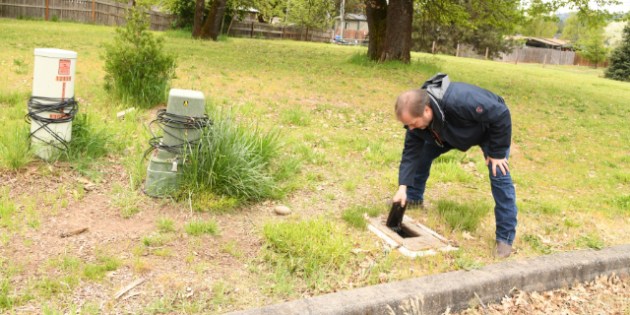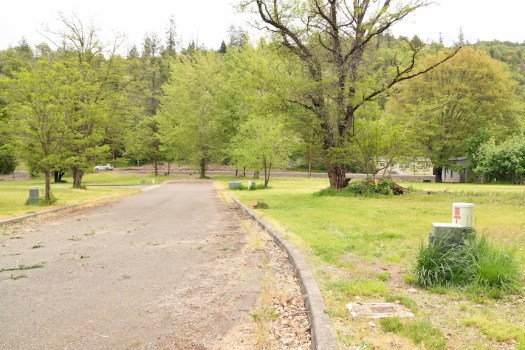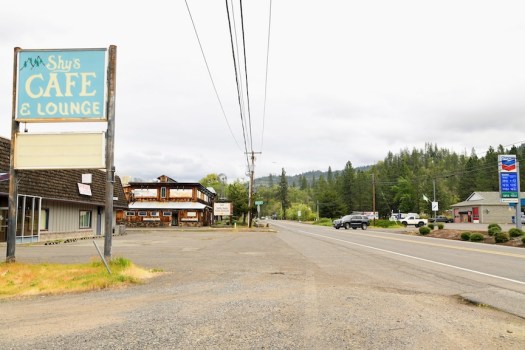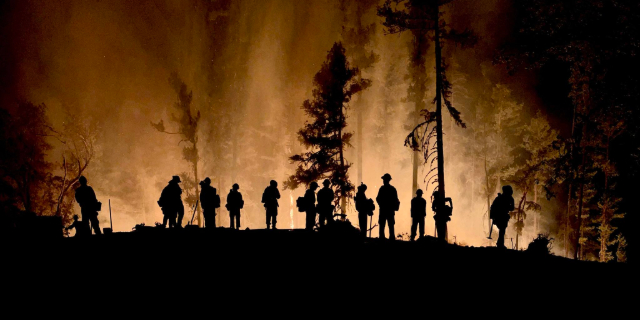A river runs through Shady Cove, but there’s not enough water to drink
Published 6:12 am Tuesday, May 13, 2025
Mayor says future of city hinges on establishing municipal water supply; ‘Without water, this city is going to completely cease to exist’
After decades marked by boil water alerts and “conserve water” notices due to reliance on 26 oft-struggling private water systems operated inside the city, Shady Cove officials are moving forward with plans to establish a municipal water system for the town of 3,200.
City officials announced in April that the city would conduct a feasibility study, secure needed water rights and identify funding for creation of a municipal water utility.
Additionally, Shady Cove Mayor Jon Ball said plans could call for valuable and attempted acquisition of the Hiland/Sunstone Water System, the largest private water system in operation in the city.
Elected in 2022, Ball said the Hiland/Sunstone system is in need of upgrades, which the city could more easily make than a private entity, and that existing infrastructure would provide a foundation for establishing a municipal water system.
Whether the city acquires the private system or decides to “start from scratch,” Ball said the city is at risk of drying up — quite literally — if a municipal water supply is not established.
“We’re moving forward, one way or another. It’s long past time for the city to have a reliable, safe source of water for our citizens,” Ball said.
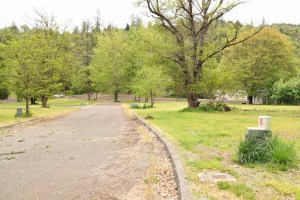
Street and utility improvements sit unused on a planned cul-de-sac at the end of Bellwood Court in Shady Cove. Limited water supplies, due to limited and failing wells, has thwarted new housing developments for more than a decade. Buffy Pollock / Rogue Valley Times
Series of private water systems riddled with problems
Homes within the city currently rely on independent wells or a series of wells that make up private water systems operated by property owners who established their own supply and invited neighboring properties to tie-in.
Because of diminishing water aquifers, supply and quality are not guaranteed, and it’s not unusual for wells to go dry several times each summer.
The largest private water system in the city, Hiland/ Sunstone, had a mechanical failure in September, leaving more than 230 homes without water for more than five days while equipment was located to complete needed repairs.
While the private systems are not the responsibility of the city, city and county officials stepped in and declared a state of emergency for the sake of public safety, and firefighters and volunteers passed out drinking water supplies and provided a fill station for non-potable water — for toilet flushing — at the fire station.
After being without water for most of a week, city officials contemplated bringing shower houses in for residents to use but lacked a location with reliable enough water from which to operate a shower trailer effectively.
Water supplies were restored after more than a five-day outage.
From June through October each year, Ball said residents — who keep storage tanks full and often purchase water to supplement well supplies — use water sparingly to avoid running out.
Decades of trying to address water supply and quality concerns
By the time Ball, a retired businessman, moved to the city around 2016, Shady Cove had been grappling with insufficient wells since the 1970s. A series of failed ballot measures over the years show a reluctance by residents to help fund a municipal supply.
“At one point, they could’ve got a citywide system for about 3 million dollars with a 1% debt, and the people voted it down. Like 80% voted no,” Ball told the Rogue Valley Times in September.
Ball, who operates one of the two-dozen private water systems in town — providing water to 14 homes and spending about $8,000 per year to test for substances like lead and copper — said he remembers trying to make coffee one morning shortly after moving to town.
“I turned the water on … and nothing happened,” he said.
“We knew there were some issues coming in, but we were told there had never been any problems with our system, which I think was a little bit of a fallacy. … By 2019, we started going dry every summer.”
Static water levels for his own well have gradually diminished, requiring creativity to keep the system flowing.
“Wherever the water kind of settles, that’s your static water level. In a well that goes down 180 feet like ours, when it was first drilled, we were at 90 to 93 feet. Our static water level — last time we checked it, a year ago, June — was 147 feet. So, the aquifers have dropped 55 feet in a short time.”
Ball said conserving water is the norm as neighbors police each other for signs of being wasteful.
“If we see somebody with a hose on their bib, from a house we know comes from our well, we just walk up and knock on the door and tell them, ‘Take off the hose,’” he said.
“In our subdivision, you’re not allowed to use domestic well water that’s been treated for anything but domestic use; no yard, no car wash, nothing. … People are very serious about it because they’ve dealt with having no water.”
Ball counts himself lucky to have semi-reliable water. Some residents and businesses, due to state guidelines governing where and how wells can be drilled, have had wells go dry but lack an alternative location on their property on which to drill another.
A neighborhood near his own, Ball noted, has been under a “no drink” order from state officials for more than a decade due to the presence of arsenic in the water supply. Without an affordable alternative, some residents still drink the water.
The fire station along Highway 62 buys water for firefighters to drink. Unable to rely on limited and low-producing fire hydrants for firefighting, fire crews haul their own water when responding to emergencies.
“They have to ‘water tender’ everything because there’s no pressure from the hydrants. They have their own tank (at the station). If a house goes up — which one burnt to the ground a few months back — they come in with a 30,000-gallon tender and their whole goal is to save the two homes on each side but let that home go because they don’t have the water to save it,” said Ball.
“They have another tender that’ll back them up and be right behind them. As they run through their water, they bring in another.”
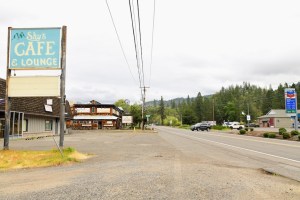
Shady Cove city officials say a lack of a municipal water supply has impacted everything from housing developments to survival of local businesses in addition to summer outages when water wells aren’t replenished quickly enough to ensure a steady supply. Buffy Pollock / Rogue Valley Times
Lack of reliable water impacts population, business survival and new development
Standing along Highway 62 outside the Jackson County Fire District 4 fire station, Ball surveyed a lineup of businesses either shuttered or struggling to stay open due to lack of reliable water supply.
Directly across from the fire station, Shy’s Café and Lounge and a landmark log-cabin style restaurant — operated over the years as Two Pines Steakhouse and eventually Bella Pasta — both sit vacant, loom over the nearby highway with dirty windows, dying landscape and dusty parking lots.
“The pharmacy is on a well. The hardware store over there, they get water delivered because their well went dry. … We have no new businesses coming to town because people don’t want to come in and invest without a reliable source of water. They’re just not going to do it,” Ball said.
“And unless you’re going to pay cash for it, you can’t buy even if you want to because the bank won’t carry the paperwork.”
On one end of a nearby neighborhood, Ball surveyed a cul-de-sac developed a dozen years ago with room to build seven new homes. Weeds push through tired pavement and overgrown trees mark what would have been front yards for neighborhood kids to play in.
Developed after a nearby subdivision went in, homes were never built after existing neighbors struggling with limited wells declined to extend water to additional parcels.
“It has curbs, sewer, electrical and everything. It’s been that way for 12 years, ready to build on,” Ball said.
“This, in a nutshell, describes what we’re up against.”
Future viability of city hinges on water
Ball said he worries about the future of the city if water supply is not addressed.
Identifying funding and setting plans in motion for the creation of a municipal system would stabilize property values and, he hopes, bring businesses and new residents to Shady Cove.
The City Council passed a resolution in recent weeks, establishing policy to explore options and secure funding for the development of a municipal water system and allowing city officials to pursue funding avenues.
“Our big thing right now is we’re making a huge push to buy that private water system, because they’re in a position where we can expand them. When you have a private company, they can’t go to the state or federal government for grants or zero percent loans, things like that,” he said.
“Either way, we’re going to find money to get something started. We do have river access on this end of town, and we could drop our own pump in and start our own water utility. Until we do something, we’re really stuck between a rock and a hard place, in a state of limbo.”
Ball said the future of the city hinges on getting water for residents and businesses.
“Without water, this city is going to completely cease to exist. … It’s surrounded by water and it’s literally going to dry up and die,” he added.
“It stinks, because we have a river running right through us … and we have no water.”
Officials for Hiland Water, owned by NW Water, did not return calls to the Rogue Valley Times.
For more information or project updates, visit online: shadycove.org/water.
Reach reporter Buffy Pollock at 458-488-2029 or buffy.pollock@rv-times.com. Follow her on Twitter @orwritergal.


